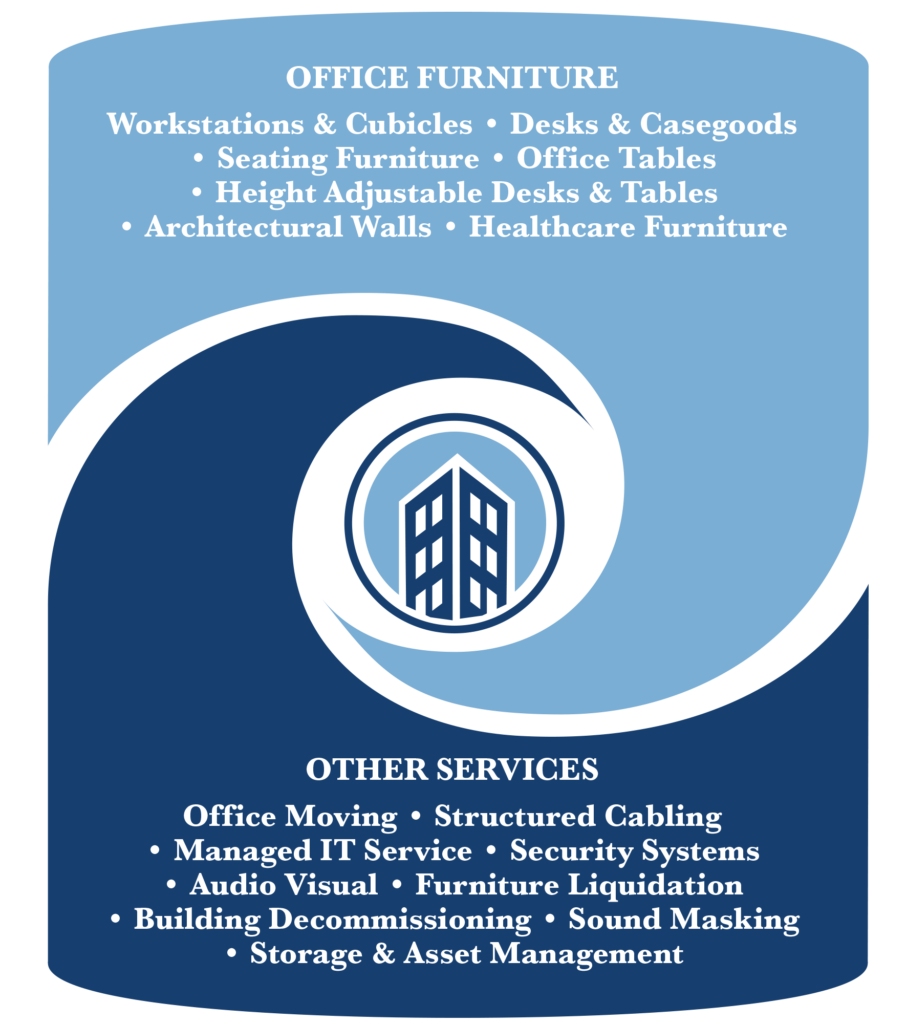16 Aug The Importance of Proper Lighting for Office Workspaces
Introduction: The Importance of Proper Lighting for Office Workspaces
Proper office lighting plays a crucial role in creating a productive and comfortable work environment. Adequate illumination enhances the visual appeal of your workspace and significantly impacts the well-being and productivity of your employees. Poorly lit offices can lead to eye strain, headaches, and fatigue, affecting the overall performance and morale of your team. Furthermore, even with enhanced lighting, the office furnishing in the space can enhance or detract from the overall lighting.
As a business owner or office manager, it is essential to prioritize the quality and efficiency of your office lighting. By understanding the diverse types of lighting solutions and their unique benefits, you can create a workspace that is both visually appealing and conducive to optimal productivity.
While MyOffice is not a lighting management vendor solution for clients, lighting is an integral part of our space planning process. We regularly run into hurdles that our clients must address as part of their office buildouts or reconfigurations. The following is a summary of the various issues facing our clients and assorted options that we have experienced with many projects over the years.
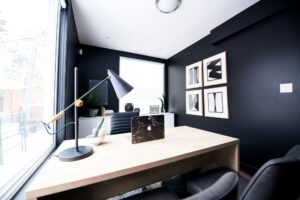
When it comes to office lighting, there are two primary categories to consider: natural lighting and artificial lighting.
Natural Lighting in the Workplace
Natural light is a highly sought-after resource in office spaces. It provides illumination as well as a positive impact on employee well-being and energy levels. Considering window and/or skylight locations, and strategically incorporated glass workstation partitions can maximize the influx of natural light. It is easier than you may think to create a bright and airy atmosphere to boost mood and focus.
To optimize the use of natural light, consider the following:
- Arrange workstations and furniture to take advantage of natural light sources.
- Utilize light-colored walls, ceilings, and office furnishings to reflect and distribute natural light more effectively.
- Incorporate adjustable window treatments, such as blinds or shades, to control the amount of natural light.
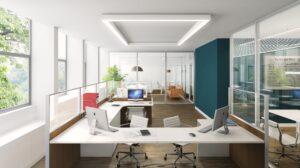
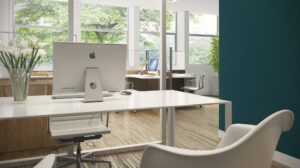
Artificial Lighting Options for Offices
While natural light is desirable, it is never a fully sufficient solution to meet the lighting needs of an entire office space. Artificial lighting solutions can help fill the gaps and provide consistent, reliable illumination throughout the day and into the evening hours (or later).
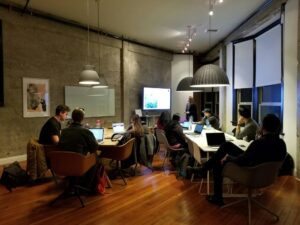 Some of the most common artificial lighting options for offices include:
Some of the most common artificial lighting options for offices include:
- LED (Light-Emitting Diode) Lighting: LED bulbs are energy-efficient, long-lasting, and offer a wide range of color temperatures to suit various work environments.
- Fluorescent Lighting: Traditional fluorescent fixtures are a cost-effective option, providing ample illumination for larger office spaces.
- Incandescent Lighting: While less energy-efficient than LED or fluorescent options, incandescent bulbs can create a warm, inviting ambiance in certain office settings. That understood, many regulations are being imposed to limit incandescent lighting so this should be evaluated.
- Task Lighting: Supplementary lighting focused on specific work areas, such as desks or conference tables, can enhance visibility and reduce eye strain.
When selecting artificial lighting for your office, many factors are to be considered. Energy efficiency, color temperature, and the specific lighting needs of your workspace to name a few.
Energy-Efficient Office Lighting Solutions
Reducing environmental impact and lowering operating costs are a prime concern for businesses. Energy-efficient lighting solutions have become increasingly popular in office settings. By investing in energy-efficient lighting, you will lower your energy bills and contribute to a more sustainable work environment. By investing in the right furnishings, you will further increase the efficiency of lighting solutions.
Some of the most energy-efficient office lighting options include:
- LED Lighting: As mentioned earlier, LED bulbs are highly energy-efficient, consuming up to 80% less energy than traditional incandescent bulbs.
- Occupancy Sensors: These sensors automatically turn lights on and off based on the presence of people in a room, ensuring that lights are only used when necessary.
- Daylight Harvesting: This system uses sensors to monitor the amount of natural light in a room and adjusts the artificial lighting accordingly, reducing energy consumption.
- Dimming Controls: Allowing employees to adjust the brightness of their lighting can help conserve energy and create a more personalized work environment.
By implementing energy-efficient lighting solutions, you can not only save on your energy bills but also demonstrate your commitment to sustainability and environmental responsibility.
Innovative Office Lighting Designs
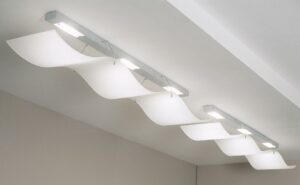 In addition to energy efficiency, office lighting can also be a powerful tool for creating a visually appealing and inspiring work environment. Innovative lighting designs can transform a mundane office space. The results can be visually striking and engaging areas that boosts employee morale and productivity.
In addition to energy efficiency, office lighting can also be a powerful tool for creating a visually appealing and inspiring work environment. Innovative lighting designs can transform a mundane office space. The results can be visually striking and engaging areas that boosts employee morale and productivity.
Some innovative office lighting design ideas include:
- Pendant Lighting: Hanging pendant lights over desks, conference tables, or reception areas can add a touch of elegance and visual interest to the space.
- Accent Lighting: Strategically placed accent lights can highlight architectural features, artwork, or specific work areas, creating a more dynamic and visually engaging environment.
- Mood Lighting: Adjustable lighting that can be programmed to different brightness and color temperatures can help create a more relaxed or energized atmosphere, depending on the needs of the space.
- Integrated Lighting Systems: Advanced lighting systems that seamlessly integrate with other building automation technologies, such as HVAC and security, can provide a more comprehensive and efficient office environment.
By exploring innovative lighting designs, you can transform your office into a space that not only meets the functional needs of your employees but also inspires creativity and collaboration.
Lighting for Specific Work Areas
While overall office lighting is essential, it is also important to consider the unique lighting requirements of different work areas within your office.
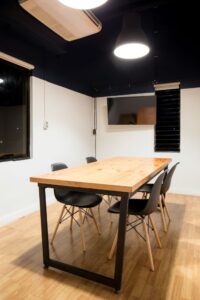 Desk Lighting
Desk Lighting
Proper desk lighting is crucial for reducing eye strain and fatigue associated with prolonged computer use. Consider installing adjustable task lighting or incorporating LED desk lamps to provide focused illumination on individual workstations.
Conference Room Lighting
Conference rooms often require a more versatile lighting solution to accommodate various activities, from presentations to collaborative discussions. Dimmable overhead lighting, combined with accent lighting or table lamps, can create the perfect ambiance for different meeting scenarios.
Breakroom and Lounge Lighting
The breakroom and lounge areas of your office should have a more relaxed and inviting lighting scheme. Softer, warmer lighting can help employees unwind and recharge during their breaks, enhancing their overall well-being and productivity.
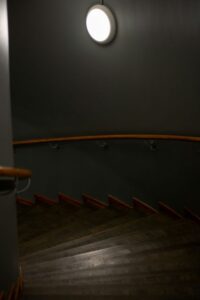 Hallway and Stairwell Lighting
Hallway and Stairwell Lighting
Proper illumination in hallways and stairwells not only enhances safety but also contributes to the overall aesthetic of your office space. Consider using energy-efficient LED fixtures or motion-activated lighting to ensure consistent and efficient illumination.
By tailoring your lighting solutions to the specific needs of each work area, you can create a harmonious and functional office environment that supports the diverse activities and requirements of your employees.
Office Lighting Trends
As the workplace evolves, so do the trends and best practices in office lighting. Stay ahead of the curve by exploring the latest advancements and innovative approaches to office lighting.
Some of the emerging office lighting trends include:
- Personalized Lighting: Giving employees more control over the lighting in their personal workspaces, allowing them to adjust brightness, color temperature, and other settings to suit their individual preferences.
- Circadian Lighting: Lighting systems that mimic the natural daylight cycle, helping to regulate employees’ circadian rhythms and improve their overall health and productivity.
- Integrated Lighting and IoT: Lighting systems that seamlessly integrate with other building automation technologies, such as HVAC, security, and even employee wellness tracking, creating a more comprehensive and efficient office environment.
- Biophilic Lighting: Lighting designs that incorporate natural elements, such as simulated daylight or nature-inspired patterns, to create a more calming and restorative work environment.
- Sustainable Lighting: The continued focus on energy-efficient and environmentally friendly lighting solutions, driven by the growing emphasis on corporate social responsibility and sustainability.
By staying informed about the latest office lighting trends, you can ensure that your workspace remains innovative, visually appealing, and supportive of your employees’ well-being and productivity.
Conclusion: Creating an Illuminated Workspace
 Effective office lighting is a crucial component of a productive and engaging work environment. It is important to understand the diverse types of lighting solutions and explore innovative design approaches. By prioritizing the well-being and productivity of your employees, you can create an illuminated workspace that inspires and motivates your team.
Effective office lighting is a crucial component of a productive and engaging work environment. It is important to understand the diverse types of lighting solutions and explore innovative design approaches. By prioritizing the well-being and productivity of your employees, you can create an illuminated workspace that inspires and motivates your team.
MyOffice is here to assist you as you incorporate lighting solutions into your space. We have trusted partners that can introduce you to solutions that you may not have considered. Let’s meet and discuss your needs!
(Images Sourced from Pixabay and Unsplash)
Ready to take the first step towards making your office more inviting and invigorating for your employees? Contact our team of office furniture experts today to learn more about our comprehensive services and how we can help you navigate this exciting evolution.
MyOffice has over 20 years of experience in supporting client’s implementing office solutions. We understand the needs of the modern office environment. Enhancing office lighting through furniture selection and layout is a core competency of ours. We are here to help!
